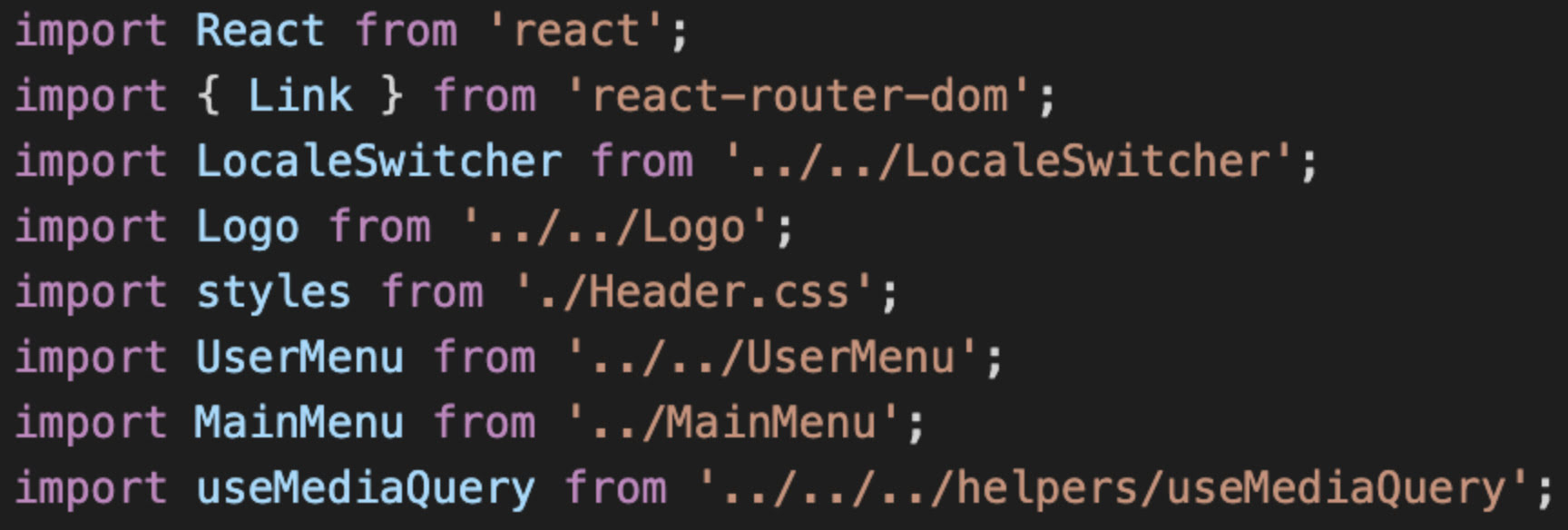Absolute Imports: How to Clean Up Your Project?
Fri, April 18, 2025 - 2 min read

📦 Absolute Imports: How to Clean Up Your Project?
Every developer has encountered this:
import Button from '../../../../components/ui/Button';The deeper the nesting — the scarier it gets.
😱 Why Relative Paths Are a Pain
- It’s hard to tell where things are being imported from.
- Moving a file breaks everything.
- In large projects — it’s chaos.
✅ Why Use Absolute Imports
1. Goodbye to “Path Hell”
A clean structure without staircase imports like ../../../../../.
import Button from 'components/ui/Button';2. Easier Refactoring
You change the structure — and nothing breaks.
No more counting how many levels up you need to go.
3. Code Consistency
All imports look the same, no matter how deep the file is.
4. Faster Navigation
Modern IDEs (WebStorm, VSCode) understand absolute paths and offer:
- Autocompletion,
- Go to definition (Ctrl+Click),
- Highlighting of invalid paths.
🛠 How to Implement?
JavaScript / TypeScript (Webpack/Vite)
Vite
vite.config.ts:
import { defineConfig } from 'vite';
import path from 'path';
export default defineConfig({
resolve: {
alias: {
'@': path.resolve(__dirname, './src')
}
}
});tsconfig.json:
{
"compilerOptions": {
"baseUrl": "./src",
"paths": {
"@/*": ["*"]
}
}
}Webpack
webpack.config.js:
const path = require('path');
module.exports = {
resolve: {
alias: {
'@': path.resolve(__dirname, 'src')
}
}
};Next.js
In jsconfig.json or tsconfig.json:
{
"compilerOptions": {
"baseUrl": ".",
"paths": {
"@components/*": ["components/*"],
"@utils/*": ["utils/*"]
}
}
}Use like this:
import Button from '@components/ui/Button';🚫 When Not to Use?
- In small pet projects with only one or two levels of depth.
- In monorepos without a unified root.
- If your project follows a strict standard that prohibits aliases.
💡 Benefits of Absolute Imports
- 🔍 Clear structure — it’s obvious where things are imported from.
- 🔄 Resilience to changes — folder structure may change, imports stay intact.
- 👥 Team compatibility — easier to read and understand each other’s code.
- 🧹 Refactor-friendly — safe to move files.
- 🧪 Better testability — tests don’t rely on current file location.
📝 Conclusion
Absolute imports are like tidying up your project:
It feels strange at first, then you wonder how you ever lived without it.
📌 Set up aliases, add them to tsconfig, and forget about ../../../.
Your code and your team will thank you 🙌